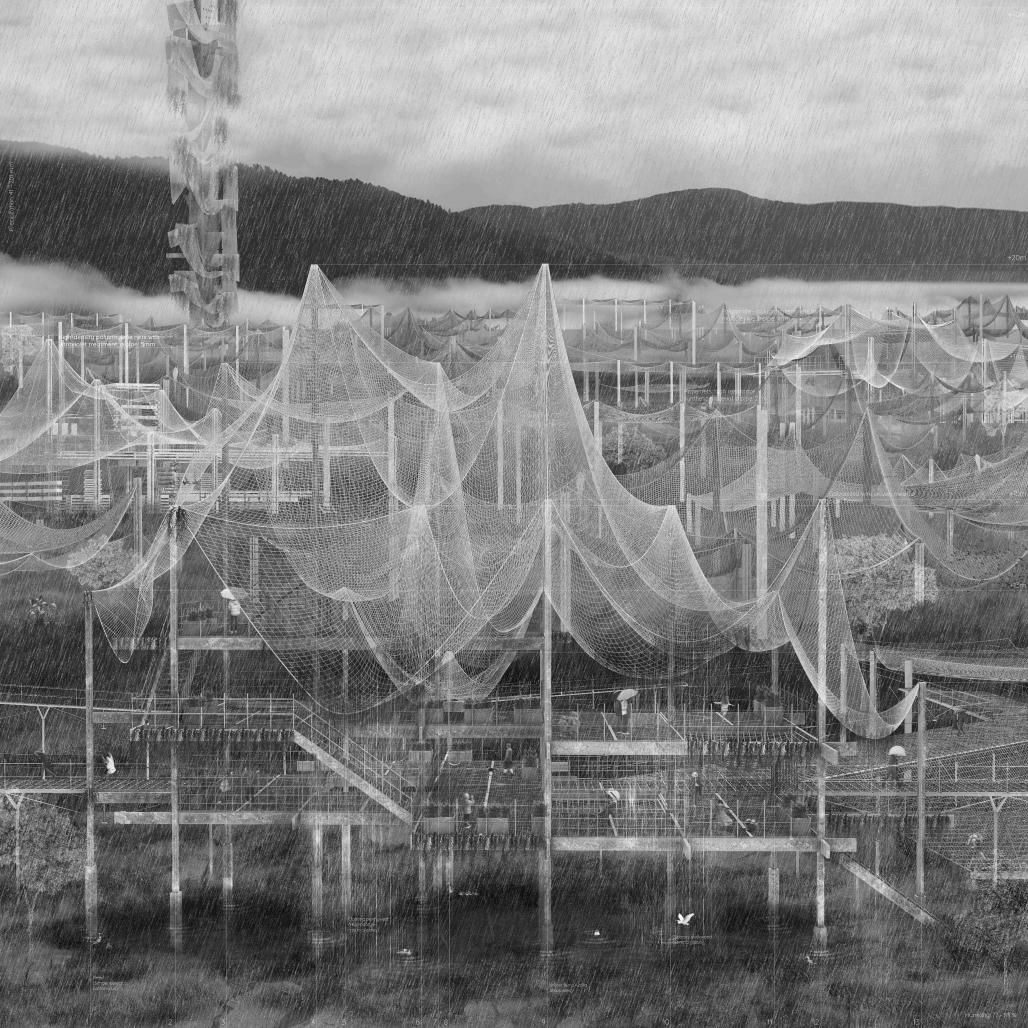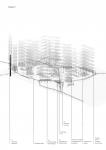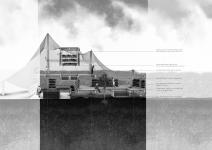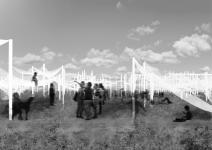How do we interact with water bodies nowadays and which are the future possibilities that would improve the life quality of the living beings dependent on the wetland ecosystem?
What is the role of wetlands in our cities and for well-being?
Continental wetlands are vital ecosystems, yet they face severe degradation specially in the Latin American context. This project explores the potential of architecture to help wetland regeneration in serious conditions of degradation and spatial segregation to gradually recover them while being a focal activity area for the neighborhood.
The proposal consists on recovering wetlands through "net" structures, which promote the ecosystem restoration throughout temperature control, humidity regulation, water retention and other environment-related responsibilities. The project, therefore, behaves as a "landscape machine", which plays a fundamental role within the wetland while implementing a sutil and versatile structure.
The main four different so-called architectural regenerative devices, developed in a deeper degree during the project, have environmental responsibilities related to water. The tower catches rainwater, filtrates and keeps it as a reservoir for dry seasons, while serving as a bird refuge and growing area for fungi and plants. The other three structures are easily adaptable for multiple functions related to educational and recreational purposes.
The wetland intervention area is located in Soacha, Colombia, more specifically in the Neuta-Tierra Blanca wetland complex towards the west periphery of the city. The initiative, overall, intends to gradually restore the wetlands of historical relevance where human and non-human relationships are essential for the place identity and regeneration, by fostering community engagement and multi-species design. In the future, the project will be easily replicable in other wetland areas with similar conditions so that the landscape achieves the relevance it deserves.
2024
The project intends to develop a system in which different pieces can be placed differently and vary according to how the nets relate to the structure and the surroundings. The system consists on layers of geometry, structure and materials that define the roles of the nets within the wetland.
The different types, densities, patterns and materials of nets are directly related with its function. Most of them can be modified according to any specific need by affecting the tension of the nets on its support axis. The double- curvature of the nets follow the logic of cable structures, directly affected by gravity and force applied on them, making the system versatile and flexible to a lot of different possibilities.
Author: María Alejandra Casas Ruiz.
Thesis directors: Claudio Rossi, Daniela Atencio & Daniel Bonilla.
Favorited 1 times





















